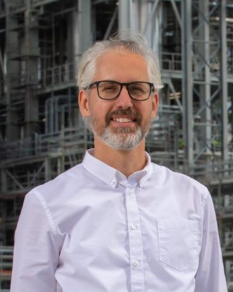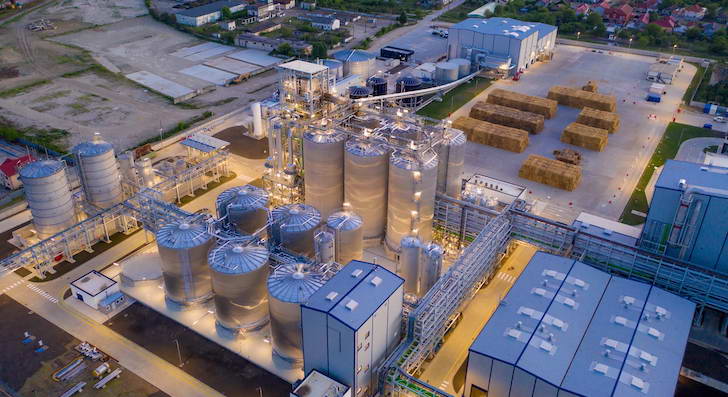5 Minutes with Thomas Hoppe, Clariant’s Head of Operations Business Line Biofuels & Derivatives

Thomas Hoppe Head of Operations, Business Line Biofuels & Derivatives, Clariant
Clariant has built the first commercial sunliquid® plant for the production of 50,000 t 2G cellulosic ethanol per year in Romania, which started production a few weeks ago. What have been the main hurdles in reaching this milestone?
We are extremely proud that we have successfully constructed and started production at our first commercial sunliquid® plant.
It takes long to develop and scale-up a new technology. Since 2012, we have been operating our pre-commercial plant in Straubing, which produces up to 1,000 metric tons of cellulosic ethanol annually. The operation of this facility in Bavaria was key for the successful scale-up of the technology to the plant in Romania now, a step that many companies often underestimate.
A certain challenge was to build a new supply chain from scratch. The sunliquid® plant relies on a steady supply of straw. Podari was chosen among 20 locations in Central and Eastern Europe precisely because of its vast supply of wheat straw, which is an underutilized resource in Romania. Our team literally went from farm to farm to explain our business proposal. Until now, we have contracts signed with more than 300 local farmers, securing the necessary supply for our plant. The experience Clariant made will also be transferred to our license customers and other stakeholders.
Another important point to consider with such an entirely new technology is that there was no reference or playbook to follow regarding permitting for this type of plant in Romania and getting the support from the local stakeholders. Through local townhall meetings, open house events and a regular newsletter we managed to get the backing of the local community and all necessary permits to operate this plant, which brings jobs to the area.
Construction in Podari, in the south-west of Romania, began in late 2019 and took two years as planned. The investment is part of two EU funded projects, LIGNOFLAG and FP7 SUNLIQUID. We appreciate a lot the support we obtained from the European Union to build that first commercial flagship plant.
How does the future of biofuels look like? What are your main markets?
Sustainability is not just a buzz word and climate change can only be slowed down if we make use of innovative technologies like sunliquid®. Decarbonization of the transportation sector can be achieved with a range of solutions including advanced biofuels, already available today.
In Europe, the outlook for the cellulosic ethanol market in Europe is positive. Within the Renewable Energy Directive (RED) II, there is a binding advanced biofuel target of 1.75% (or 3.5 % if double counted) in 2030. The first binding step of this target has been taking effect in 2022. A new legislation, the so called RED III, will even increase the mandatory volume to at least 2.2%. All this underlines the strong need for innovative technologies to reduce greenhouse gas (GHG) emissions like sunliquid®, which can enable achieving between 95-120% of CO2savings.

Clariant’s first commercial sunliquid plant in Podari, Romania
What political/regulatory support do you need – and is there any indication this is forthcoming – for your sunliquid® technology?
Global legislation is more and more focusing on high carbon saving technologies to combat climate change. Clear legislation mandates and government measures on advanced biofuels are existing in EU and US and are expected in other regions as well.
The current framework set-out in the Fit-for-55 package by the EU is strongly supported by Clariant. For us, a stable legislative framework that protects and secures investments is the most important thing to ask. Furthermore, the global climate goals can only be achieved with a combination of technologies. Hence, legislative frameworks should not support one or the other technology, like only electromobility, but should be technology neutral to ensure the most efficient technologies are deployed.
Will you broaden your product portfolio by targeting markets other than mobility? E.g., biochemicals?
Second generation bioethanol is addressing the key challenges of our time, such as emissions-free mobility and enabling downstream products made of renewable feedstock. Although bioethanol is well-established as a carbon-reducing blend component in the road transportation sector for decades, Clariant is excited about the rapidly expanding uses for ethanol in making bio-based chemicals and especially sustainable aviation fuels, short SAF, through innovative technologies, such as the Alcohol-to-Jet technology being deployed by LanzaJet.
The sunliquid® technology was always foreseen as a platform technology. If in future the road transport sector is further electrified, the technology platform will be used in the growing markets of SAF and biochemicals. These downstream conversion technologies can even be bolt-on to existing sunliquid® plants. Therefore, the investment into sunliquid® cellulosic ethanol technology is a non-regrettable move for the future. The market of SAF is expected to grow significantly in the future, mainly driven by upcoming regulations like the ReFuel Aviation in the EU or SAF policies in the US.
In addition, cellulosic ethanol and sugars also have the potential to serve as a building block for future production of bio-based chemicals. Examples are renewable ethylene and polyethylene. We are already active on a global scale with sunliquid® and are proud of the confidence the market has shown in our technology so far, with 5 customers since 2017 in EU and China.
Category: Thought Leadership, Top Stories















